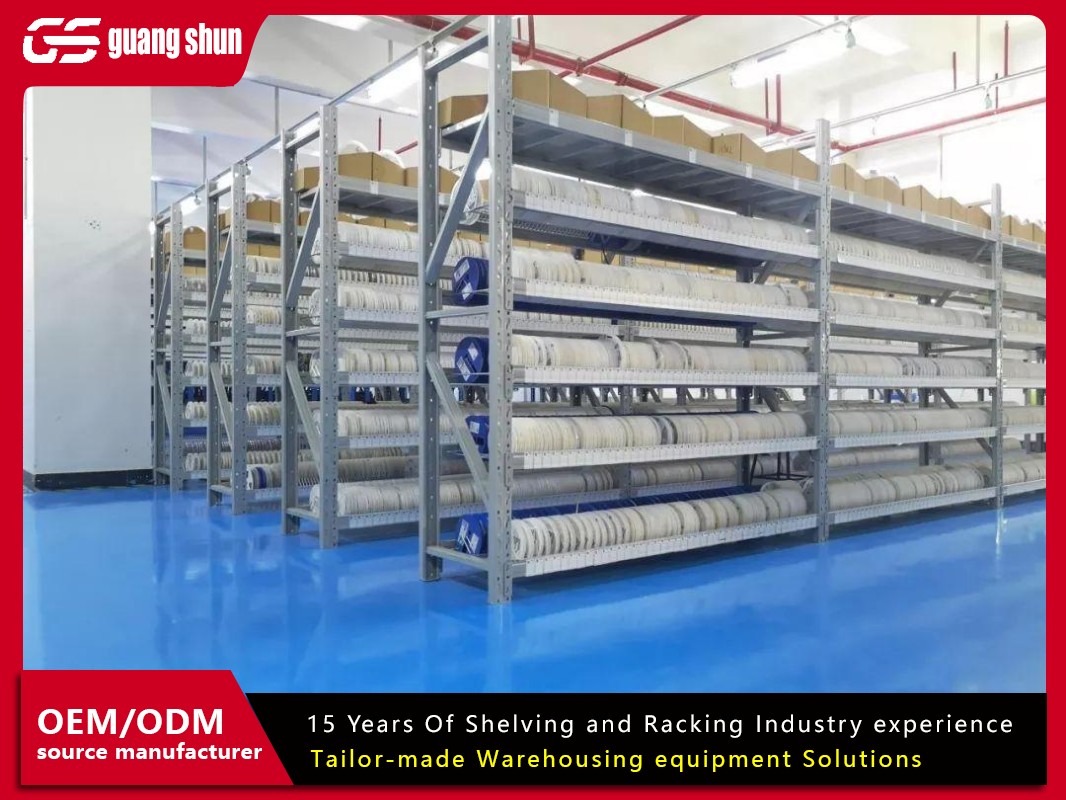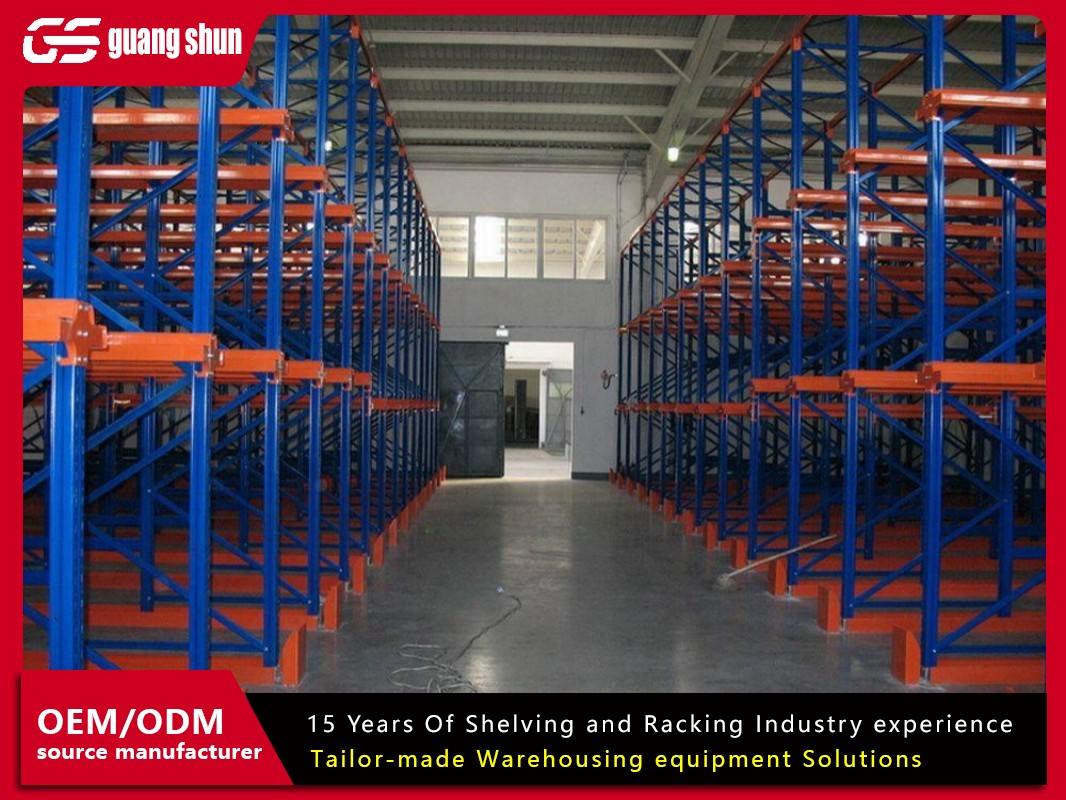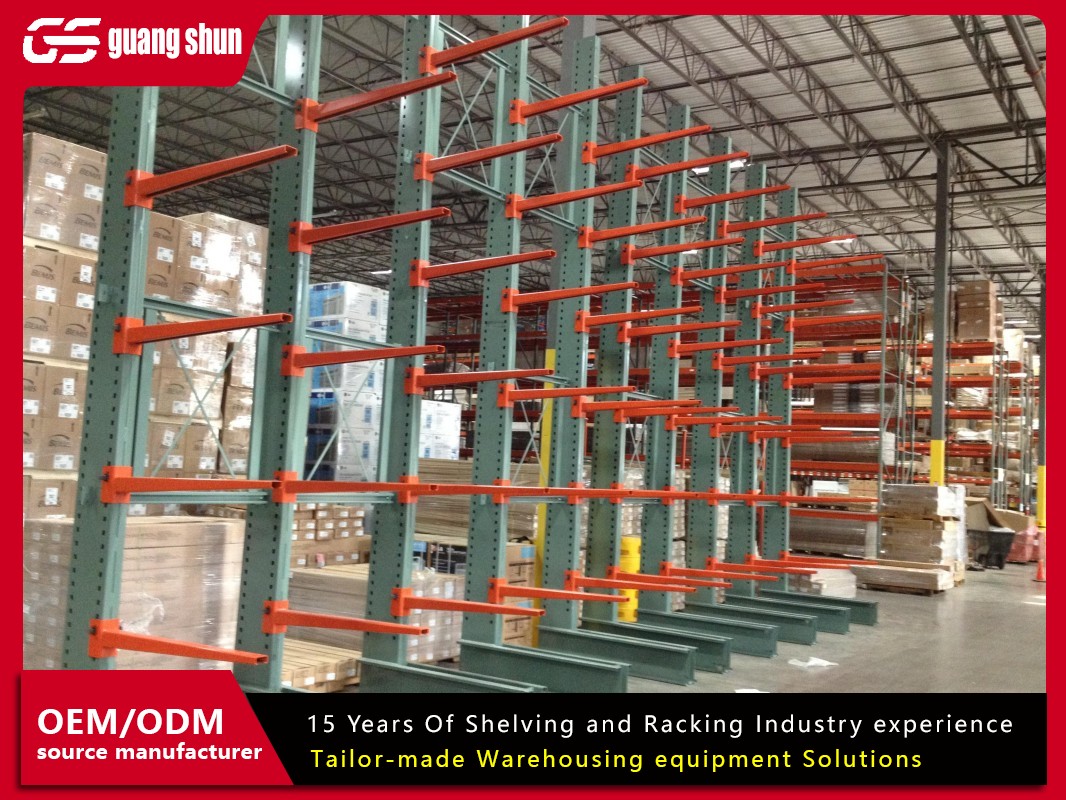In the world of warehouse and logistics management, maximizing storage space while maintaining accessibility is a constant challenge. One innovative solution that has gained popularity is the use of pushback racks. These high-density storage systems are designed to optimize floor space, improve inventory management, and enhance operational efficiency. But what exactly are pushback racks, and how do they address the needs of modern warehouses? This comprehensive guide delves into the intricacies of pushback racks, exploring their functionality, advantages, applications, and potential pitfalls. Whether you're a warehouse manager, logistics professional, or business owner, understanding pushback racks can help you make informed decisions about your storage infrastructure. By the end of this article, you'll have a thorough grasp of how pushback racks work, their key benefits, and the problems to watch out for, all while ensuring keyword-rich content for SEO optimization. Let's dive in!
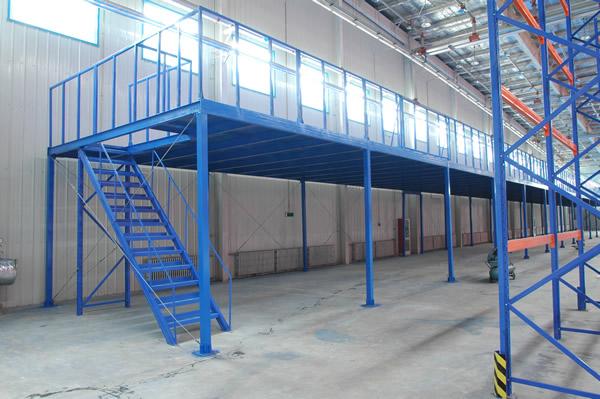
What Are Pushback Racks?
Pushback racks are a type of pallet storage system that allows for high-density storage by utilizing depth-oriented design. Unlike traditional selective pallet racks, which require aisles for each row, pushback racks enable multiple pallets to be stored in a single lane, with each pallet resting on wheeled carts or rails. When a new pallet is loaded from the front, it pushes the existing pallets backward, hence the name "pushback." This system typically operates on a last-in, first-out (LIFO) basis, making it ideal for environments where inventory turnover is predictable. Pushback racks are commonly used in warehouses, distribution centers, and manufacturing facilities to maximize storage capacity without expanding the physical footprint. They represent a middle ground between selective racks and higher-density systems like drive-in racks, offering a balance of accessibility and space savings. Understanding the basics of pushback racks is crucial for evaluating their suitability for your operations.
The construction of pushback racks involves sturdy steel frames, inclined rails, and nested carts that glide smoothly. Each lane can hold between two to five pallets deep, depending on the configuration. This design reduces the number of aisles required, freeing up valuable floor space. For businesses dealing with large volumes of similar products, pushback racks provide an efficient way to organize inventory while minimizing handling time. However, it's essential to note that pushback racks require specific handling equipment, such as forklifts, for loading and unloading. As we explore further, you'll see how these systems compare to other storage solutions and why they might be the right choice for your needs.
How Do Pushback Racks Work?
The functionality of pushback racks is based on a simple yet effective mechanical principle. Each lane in a pushback rack system is equipped with a series of inclined rails or tracks, along with wheeled carts that hold the pallets. When a forklift operator loads a pallet onto the front position, the weight of the pallet causes it to slide backward, pushing the previously loaded pallets further into the lane. This process continues until the lane is full. To retrieve a pallet, the operator simply removes the front pallet, and the next pallet automatically rolls forward due to gravity and the inclined design. This LIFO approach ensures that the most recently stored items are accessed first, which can be advantageous for certain inventory types.
The mechanics of pushback racks rely on precision engineering to ensure smooth operation. The incline angle, typically between 1.5 to 3 degrees, is critical for allowing pallets to move effortlessly without excessive force. Additionally, pushback racks often include safety features like stop bars or brakes to prevent pallets from sliding out unexpectedly. Proper training for forklift operators is essential, as incorrect handling can lead to jams or damage. In practice, pushback racks work best with uniform pallet sizes and weights, as variations can disrupt the flow. By understanding how pushback racks operate, businesses can implement them effectively to streamline their storage processes.
Key Benefits of Using Pushback Racks
Pushback racks offer numerous advantages that make them a popular choice for high-density storage. First and foremost, they significantly increase storage capacity by reducing aisle space. Traditional racks may require aisles for every row, but pushback racks can store multiple pallets deep, often achieving up to 75% more storage density. This is particularly beneficial for warehouses with limited square footage, as it allows them to store more inventory without costly expansions. Additionally, pushback racks improve accessibility compared to other high-density systems. While drive-in racks might require forklifts to enter the structure, pushback racks allow operators to remain in the aisle, enhancing safety and efficiency.
Another key benefit of pushback racks is their flexibility. They can be customized to various depths and heights, accommodating different product types and warehouse layouts. This adaptability makes pushback racks suitable for a wide range of industries, from retail to cold storage. Moreover, pushback racks support better inventory management by reducing clutter and enabling organized lane-based storage. With clear visibility of pallet positions, workers can quickly locate items, minimizing search times. Cost-effectiveness is also a major advantage; although the initial investment in pushback racks might be higher than selective racks, the long-term savings in space and labor often justify the expense. By leveraging these benefits, companies can achieve higher productivity and ROI.
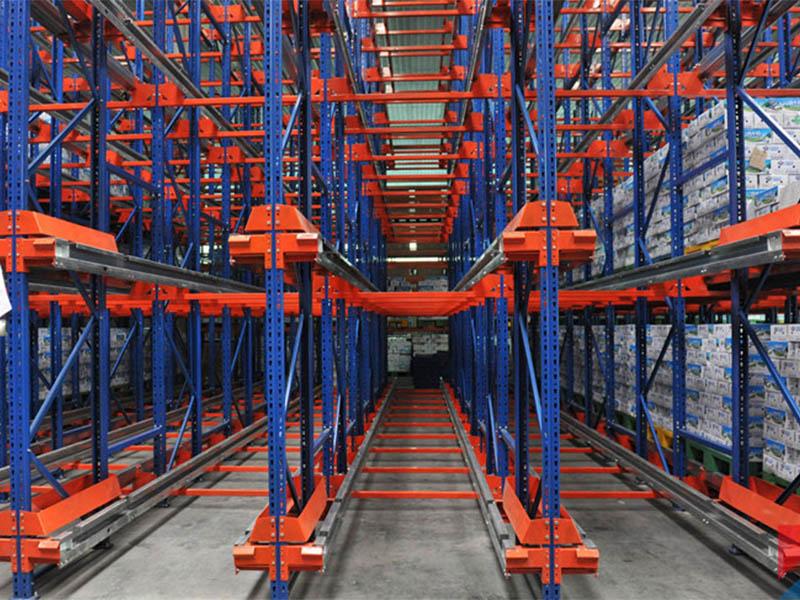
Common Applications of Pushback Racks
Pushback racks are versatile systems used across various sectors. In distribution centers, they are ideal for storing fast-moving consumer goods (FMCG) where products have a high turnover rate. For example, beverage companies often use pushback racks to manage pallets of drinks efficiently. Similarly, in the food industry, pushback racks help organize perishable items in cold storage facilities, where space optimization is critical due to high energy costs. The LIFO nature of pushback racks makes them well-suited for products with expiration dates, ensuring that newer stock is used first.
Manufacturing plants also benefit from pushback racks for storing raw materials or finished goods. By reducing aisle space, manufacturers can free up area for production lines. Another common application is in retail warehouses, where pushback racks handle seasonal items or promotions. Additionally, pushback racks are used in third-party logistics (3PL) providers who need adaptable storage solutions for diverse clients. It's important to note that pushback racks perform best when applied to homogeneous SKUs, as mixed inventory can lead to inefficiencies. Case studies show that businesses implementing pushback racks often see a 20-30% increase in storage utilization, highlighting their practical value.
Installation and Maintenance of Pushback Racks
Proper installation is crucial for the safe and efficient operation of pushback racks. The process begins with a thorough site assessment, including floor condition, ceiling height, and load requirements. Professional installers typically anchor the steel frames to the floor to prevent tipping, especially in seismic zones. The inclination of the rails must be calibrated precisely to ensure smooth pallet movement. During installation, it's advisable to involve experienced engineers to avoid common pitfalls, such as misalignment or overloading. Training for staff is equally important; forklift operators need to understand how to load and unload pallets correctly to prevent accidents.
Maintenance of pushback racks involves regular inspections to check for wear and tear. Key components like wheels, rails, and frames should be examined monthly for signs of damage. Lubrication of moving parts can reduce friction and extend the system's lifespan. Common maintenance issues include jammed carts or bent rails, which can often be prevented with proper use. Additionally, cleaning the racks to remove debris ensures uninterrupted operation. While pushback racks are durable, neglecting maintenance can lead to costly repairs or downtime. Implementing a preventive maintenance schedule can help maximize the longevity of pushback racks and ensure consistent performance.
Challenges and Problems with Pushback Racks
Despite their benefits, pushback racks come with several challenges that businesses must consider. One major problem is the LIFO inventory method, which may not suit all products. For items requiring first-in, first-out (FIFO) rotation, such as perishable goods, pushback racks can lead to spoilage if not managed carefully. Another issue is the potential for pallet jams or misalignment. If pallets are unevenly loaded or exceed weight limits, they can get stuck, requiring manual intervention and causing delays. This problem is exacerbated when using non-standard pallet sizes, as pushback racks are designed for uniformity.
Safety concerns are also associated with pushback racks. The inclined design can cause pallets to slide unexpectedly if safety mechanisms fail, posing risks to workers. Moreover, pushback racks require skilled forklift operators; inexperienced handling can result in accidents or damage to the system. Cost is another factor; while pushback racks save space, the initial investment is higher than basic racks, and maintenance costs can add up. Finally, pushback racks may not be suitable for very deep lanes (e.g., beyond five pallets), as retrieval times can increase. By acknowledging these problems, businesses can take proactive measures, such as staff training and regular audits, to mitigate risks.
Comparing Pushback Racks to Other Storage Systems
When evaluating storage options, it's helpful to compare pushback racks with alternatives like selective racks, drive-in racks, and mobile pallet racks. Selective racks offer direct access to every pallet but require more aisle space, making them less dense than pushback racks. Drive-in racks provide higher density by allowing forklifts to enter the structure, but they operate on a FIFO basis and can be slower due to internal maneuvering. Pushback racks strike a balance with LIFO access and medium density, often resulting in better throughput for certain workflows.
Mobile pallet racks, which move on tracks to create aisles on demand, offer even higher density but at a higher cost and complexity. Pushback racks are generally more affordable and easier to install than mobile systems. However, they lack the flexibility of selective racks for random-access inventory. The choice depends on factors like inventory turnover, product variety, and budget. For businesses with high-volume, similar SKUs, pushback racks are often the optimal solution. By conducting a comparative analysis, companies can select the right system to meet their specific needs.
Future Trends in Pushback Rack Technology
The evolution of pushback racks is influenced by advancements in automation and sustainability. Future trends may include integrated sensors for real-time inventory tracking, allowing pushback racks to sync with warehouse management systems (WMS). Automation technologies, such as robotic forklifts, could enhance the efficiency of pushback racks by reducing manual labor. Additionally, eco-friendly materials like recycled steel are becoming more common in pushback rack manufacturing, aligning with green initiatives.
Another trend is the customization of pushback racks for specialized environments, such as narrow-aisle warehouses or automated storage and retrieval systems (AS/RS). As e-commerce grows, the demand for high-density solutions like pushback racks is expected to rise, driving innovation. By staying updated on these trends, businesses can future-proof their storage infrastructure and leverage pushback racks for long-term success.
In summary, pushback racks are a powerful tool for optimizing warehouse storage, offering a blend of density, accessibility, and efficiency. From their mechanical workings to practical applications, this guide has covered the essential aspects of pushback racks, including the benefits and potential problems. While challenges like LIFO limitations and maintenance requirements exist, these can be managed with proper planning. As storage needs evolve, pushback racks continue to adapt, making them a valuable investment for many industries. By incorporating pushback racks into your operations, you can achieve significant space savings and improved productivity. If you're considering pushback racks, consult with experts to ensure a tailored solution that meets your unique requirements.



